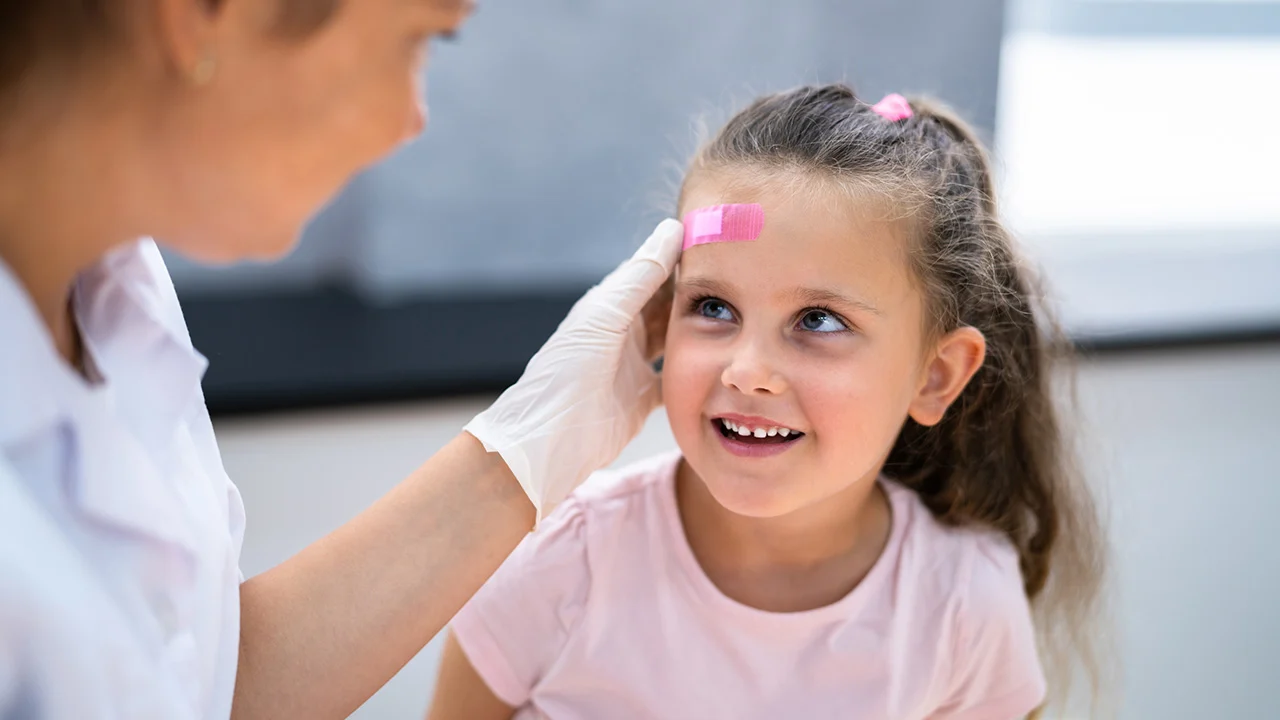
DiYES International School – Head trauma on children’s health is a serious concern for parents and caregivers. Children are more susceptible to head injuries due to their active lifestyles and developing bodies. Whether it’s a minor bump or a more severe blow, head trauma can have significant consequences if not addressed promptly. Understanding the types of head injuries, their symptoms, and how to manage them is essential for ensuring your child’s health and safety.
Children experience head trauma from a variety of activities. Falls are one of the leading causes of head injuries, especially in toddlers and young children. As they explore their environment, they may trip or fall, potentially leading to a blow to the head. In older children and adolescents, sports-related accidents such as football, cycling, or skateboarding are common causes of head trauma. Even car accidents can cause significant head injuries.
“Read about: The Impact of Psoriasis on Children’s Lives: From Skin to Self-Esteem”
Head injuries can vary in severity, and they are typically classified into several types. Concussions are the most common type of head injury among children. A concussion occurs when the brain moves rapidly inside the skull, often due to a blow or jolt. The symptoms of a concussion may include headache, dizziness, confusion, and memory loss. More severe head injuries can involve skull fractures or internal bleeding, which may require immediate medical attention.
The symptoms of head trauma can range from mild to severe. In cases of mild head injuries, such as concussions, children may experience headache, nausea, or dizziness. However, in more severe cases, symptoms can be much more serious. If your child loses consciousness, has a seizure, or experiences significant confusion or trouble walking, these could be signs of a serious brain injury. It’s important to monitor your child closely and seek medical help if you notice any of these symptoms.
Treatment for head trauma depends on the severity of the injury. Mild concussions often require rest and a gradual return to normal activities. Medical professionals may recommend limiting screen time and avoiding physical exertion until the child has fully recovered. In more severe cases, children may require hospitalization for observation, imaging tests, or surgery to address any internal injuries.
Even after receiving treatment, it’s crucial to monitor your child’s recovery. Children with head trauma should be monitored for changes in behavior, mood, and cognitive function. Sudden changes in a child’s ability to concentrate, remember things, or interact with others may indicate that further treatment is needed. Parents should ensure that children get enough rest and avoid activities that could cause additional strain on their recovery.
“Read more: Thomas Keller: Master of Fine Dining and the Genius Behind The French Laundry”
Preventing head injuries in children involves creating a safe environment. For younger children, using safety gates, cushioning sharp corners, and childproofing the home can reduce the risk of falls. In older children, wearing protective gear during sports activities, such as helmets and padding, can significantly lower the risk of head trauma. Teaching children about safe practices, such as proper biking techniques, can also help prevent injuries.
Head trauma can have lasting effects on children’s health if not properly addressed. Being aware of the types of head injuries, recognizing symptoms, and seeking timely medical care are essential steps in ensuring your child’s safety. By taking preventative measures and monitoring recovery, parents can help minimize the risks and promote better outcomes for children who experience head trauma.